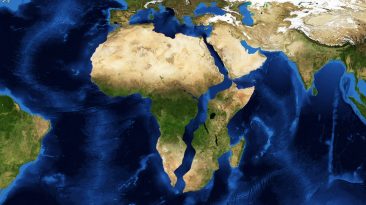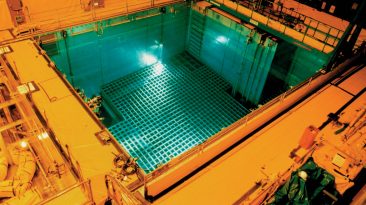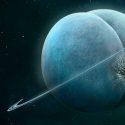What if, someday, we decided that the usefulness of our planet had run its course, and humans needed to scour space to find somewhere new to live? But instead of finding a potentially habitable Earth-like exoplanet light years away, we’d build our own artificial world right in the Solar System.
What kind of technology would we need to manufacture a new planet? Where would we find enough raw materials for our future world?
How long would it take us to finish this planetary construction project? Rocky planets like Earth are born from the leftover material of a newly formed star. They start off as grains of dust smaller than the width of a human hair.
Then these grains fuse into larger chunks that keep colliding with each other until, after a few million years, they develop into a new terrestrial world. Theoretically, we understand how planets are formed in the Universe. But how would we go about manufacturing an artificial one?
If we humans were to build a planetary replica and populate it, we’d have to churn out a rock with an atmosphere of breathable air, the right temperature, Earth-like gravity, and a stable orbit around the Sun. And that’s just for starters.
We’d start the construction in the Sun’s habitable zone. That would help us maintain Earth-like temperatures on our artificial planet. But where would we find all the materials to build it?
Asteroids might seem a good source. The problem is, the Earth has the mass of over 2,000 asteroid belts. There’s simply not enough asteroids in the Solar System to build a new, Earth-sized world.
But there could be enough materials in the Oort cloud – the swarm of icy debris that, hypothetically, exists in the outermost reaches of the Solar System. But this cloud is so far away, that even Voyager 1, that has been traveling at 17 km/s (11 mps) for the past 41 years, won’t reach it for another 300 years. And it won’t make it to the other side of the Oort cloud for about 30,000 years.
We’d need to build some faster spacecraft to get all that dust and nudge it in the right direction. We could also start stealing moons from other planets. All of Jupiter’s moons, for example, would give us enough material to craft a planet around 7% the size of Earth. That would be a good start if we could manage to pull them out of Jupiter’s orbit.
It wouldn’t be necessary to build our new world as big as the Earth to replicate the same force of gravity we feel now. If we could pack one tenth of the Earth’s mass into a sphere the size of the Moon, it would do the same trick. Still, it would take us at least several hundred years to finish the construction.
Once all the engineering issues were solved, and our newly formed artificial planet settled into orbit around the Sun, we’d dump in some water. We’d let it evaporate to create the atmosphere. We could even inject some of the carbon dioxide released by polluting industries on Earth. Maybe, we’d fully automate and move all those industries to our new planet, so that they can fill its atmosphere with CO2.
Then we’d bring in the plants. Plants would slowly build up oxygen in the atmosphere through photosynthesis. Finally, after millennia of planet-building, the first human colonies would set foot on the new terrestrial human-made planet.
Even though it would be smaller in size, the Earth’s replica wouldn’t seem much different from the original.Earth-like temperatures and gravity would make it feel like our home planet.
But it wouldn’t be as stable as the Earth. Our artificial world would require active maintenance – from the planetary environment to our orbital parameters.
Currently, there’s so much we don’t know about the Universe. And we can only guess how a new planet would form within it. At this point, it may be easier to terraform an existing world instead of building a totally new one.
Subscribe to What-If on Youtube or follow the show on Facebook Watch.
Sources
- “Could We Ever Build An Artificial World?”. Hadhazy, Adam, 2014. Popular Mechanics. Accessed November 29 2018.
- “Q: Can We Build A Planet?”. 2011. Ask A Mathematician / Ask A Physicist. Accessed November 29 2018.
- “Artificial Planet”. 2018. Terraforming Wiki. Accessed November 29 2018.
- “NASA Viz: How Planets Are Born”. Takemura, Alison, 2018. Nasaviz.Gsfc.Nasa.Gov. Accessed November 29 2018.
- “In Depth | Oort Cloud – Solar System Exploration: NASA Science”. 2018. Solar System Exploration: NASA Science. Accessed November 29 2018.



























